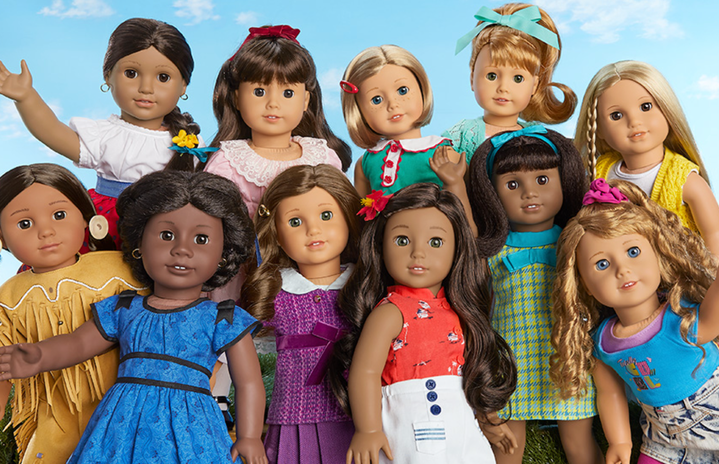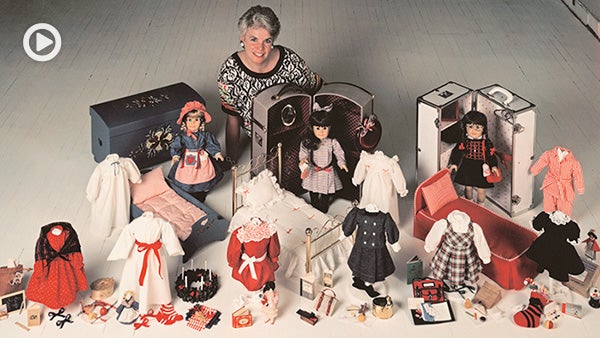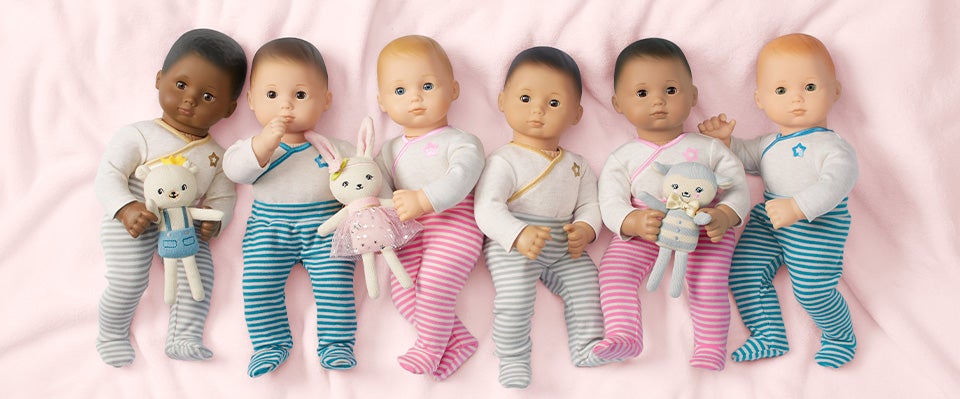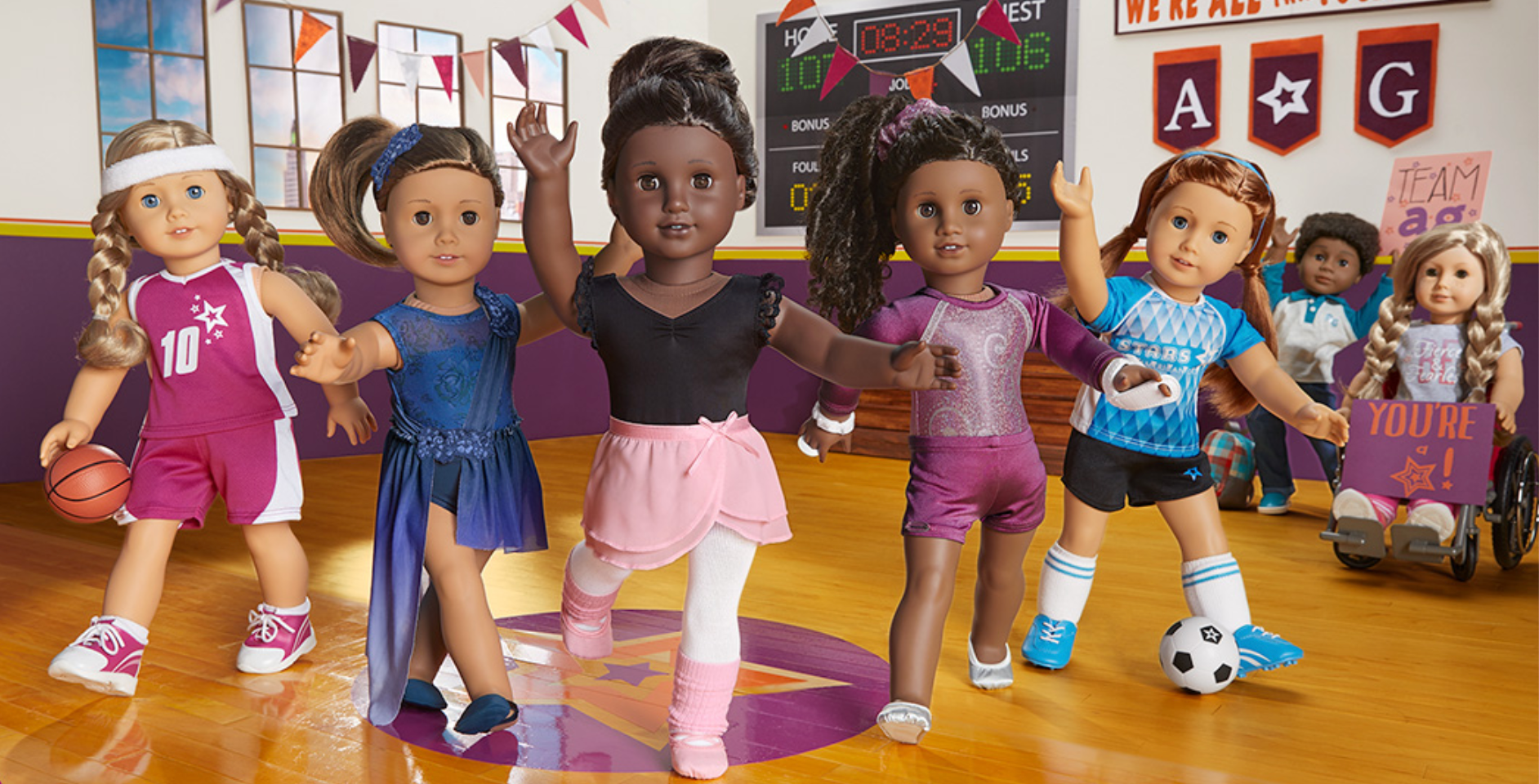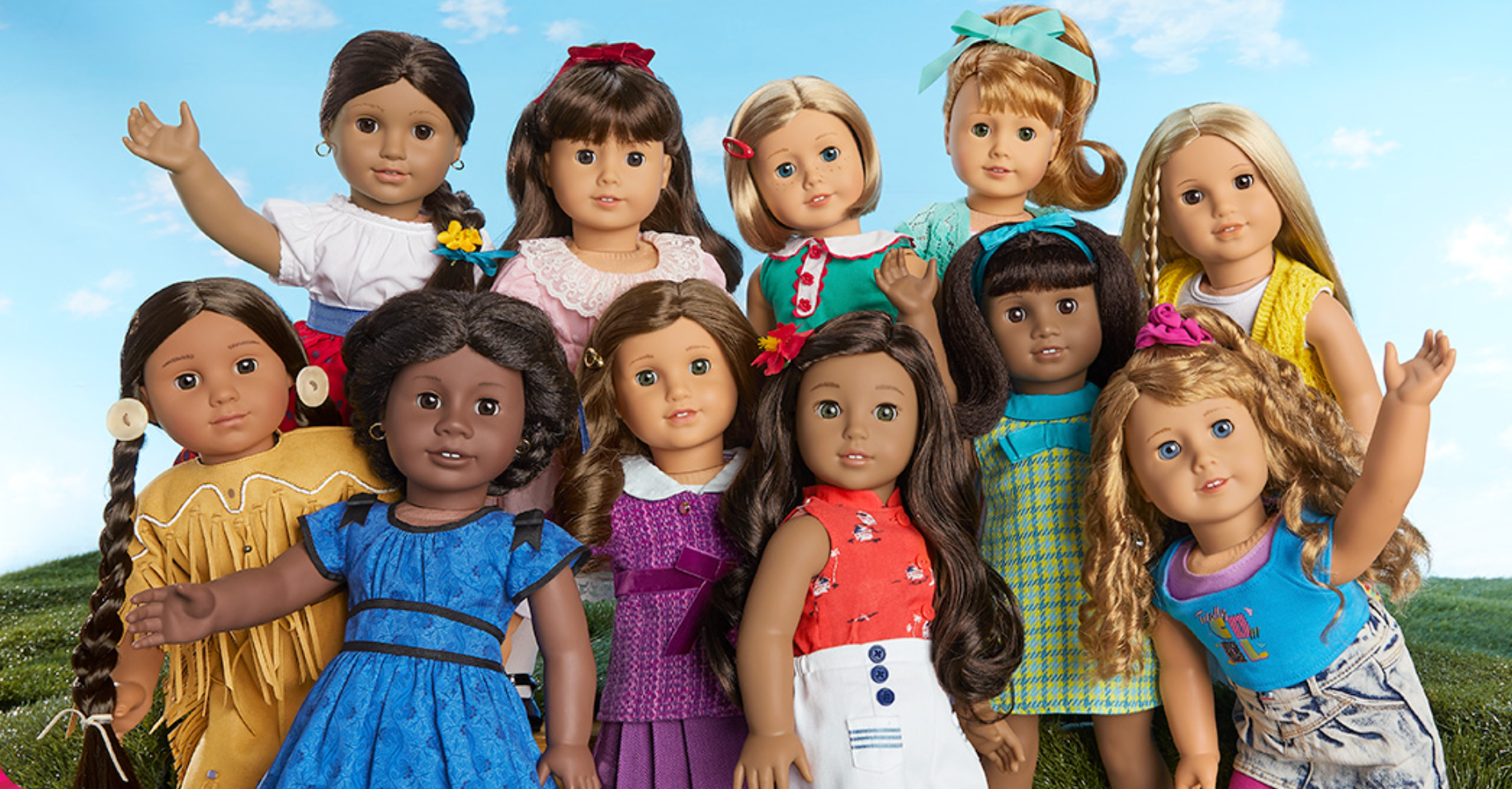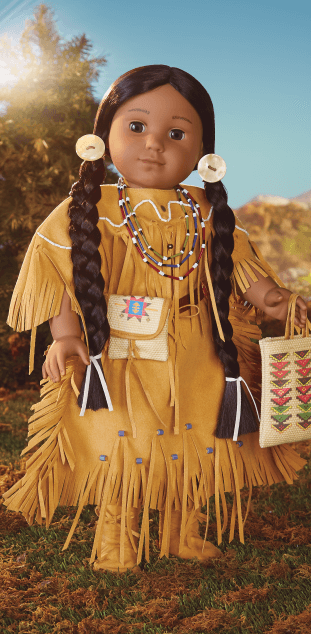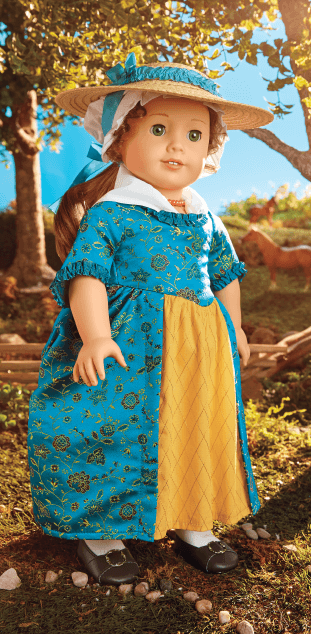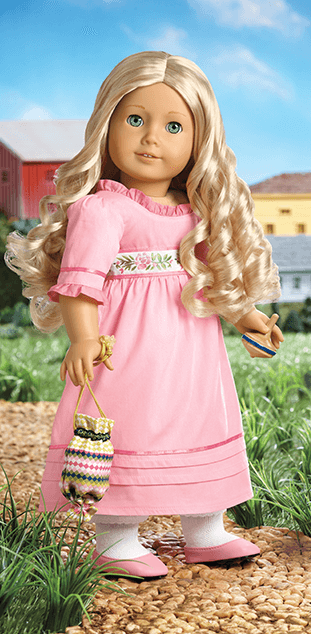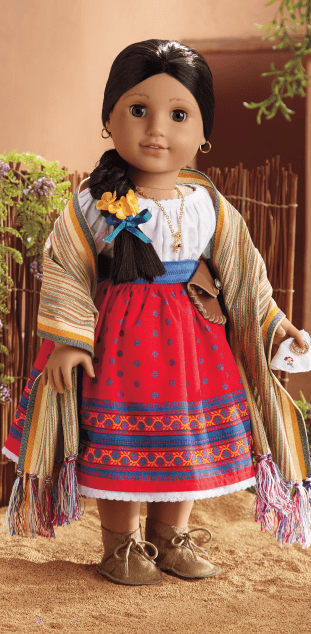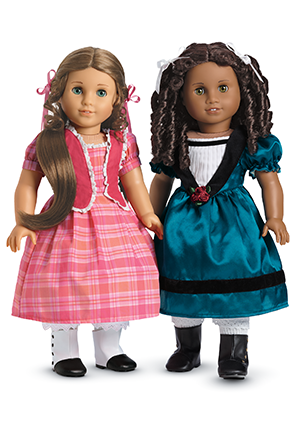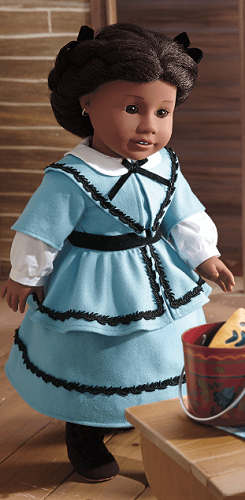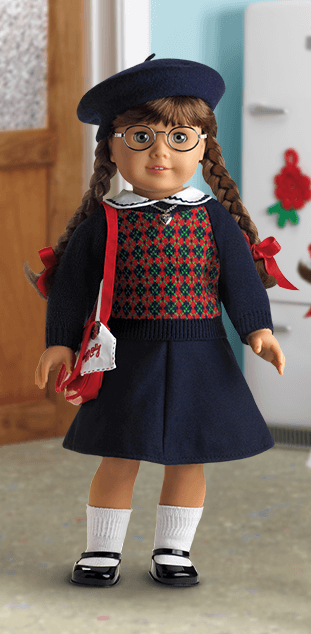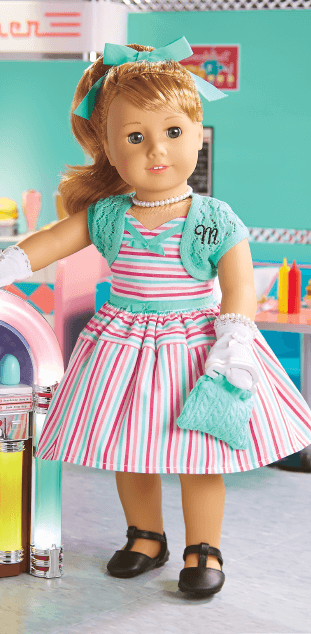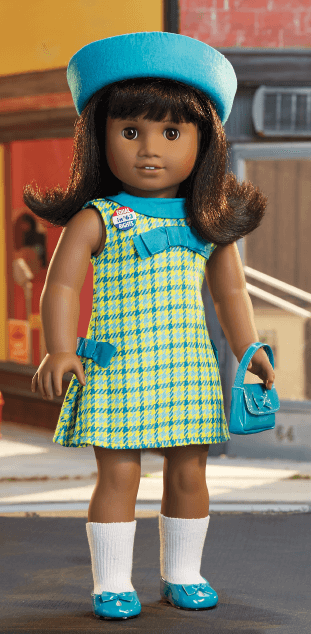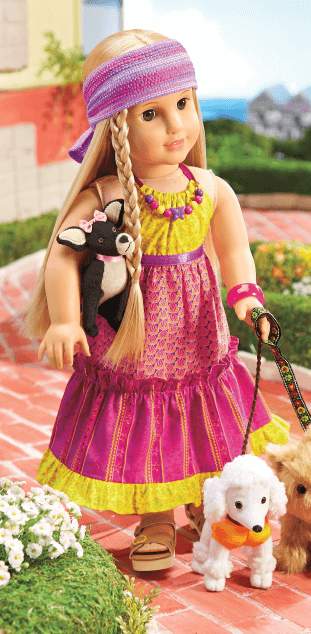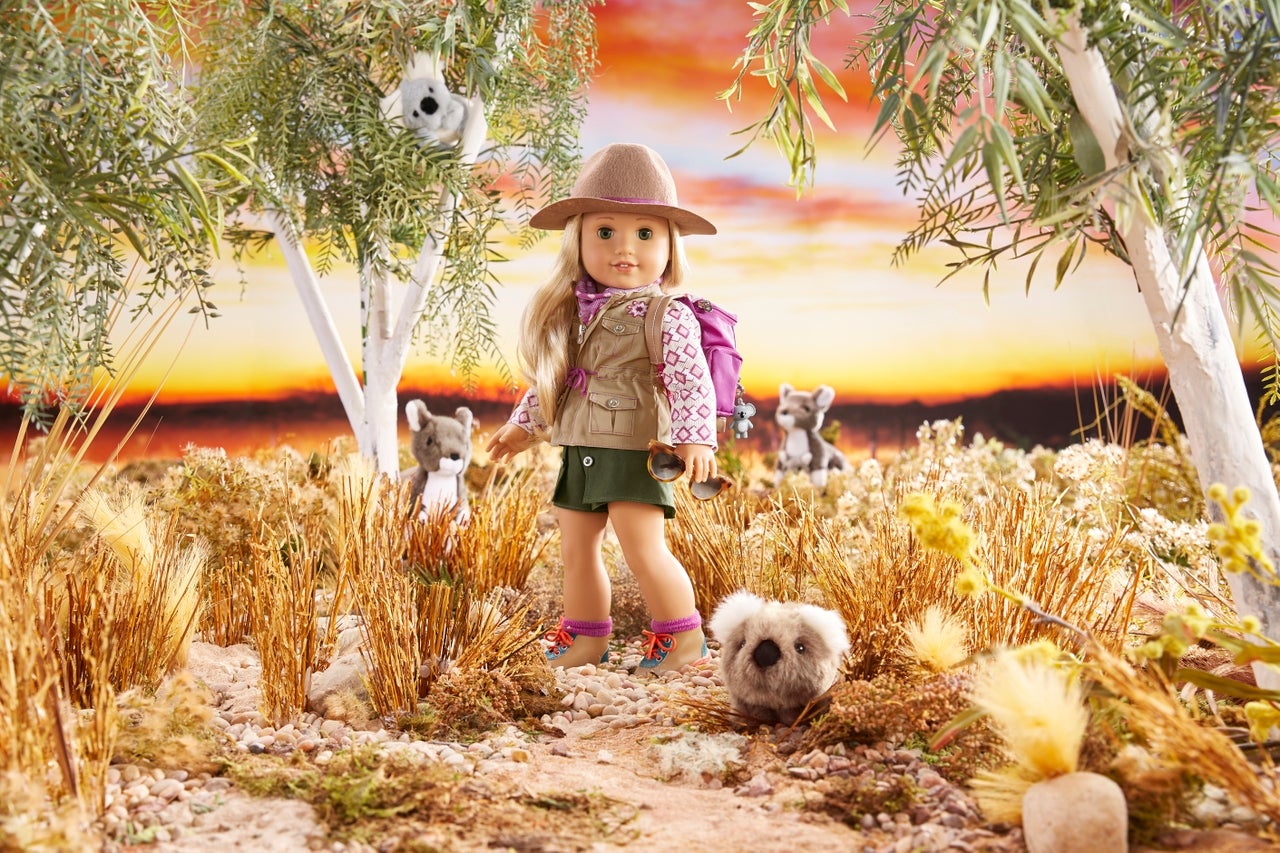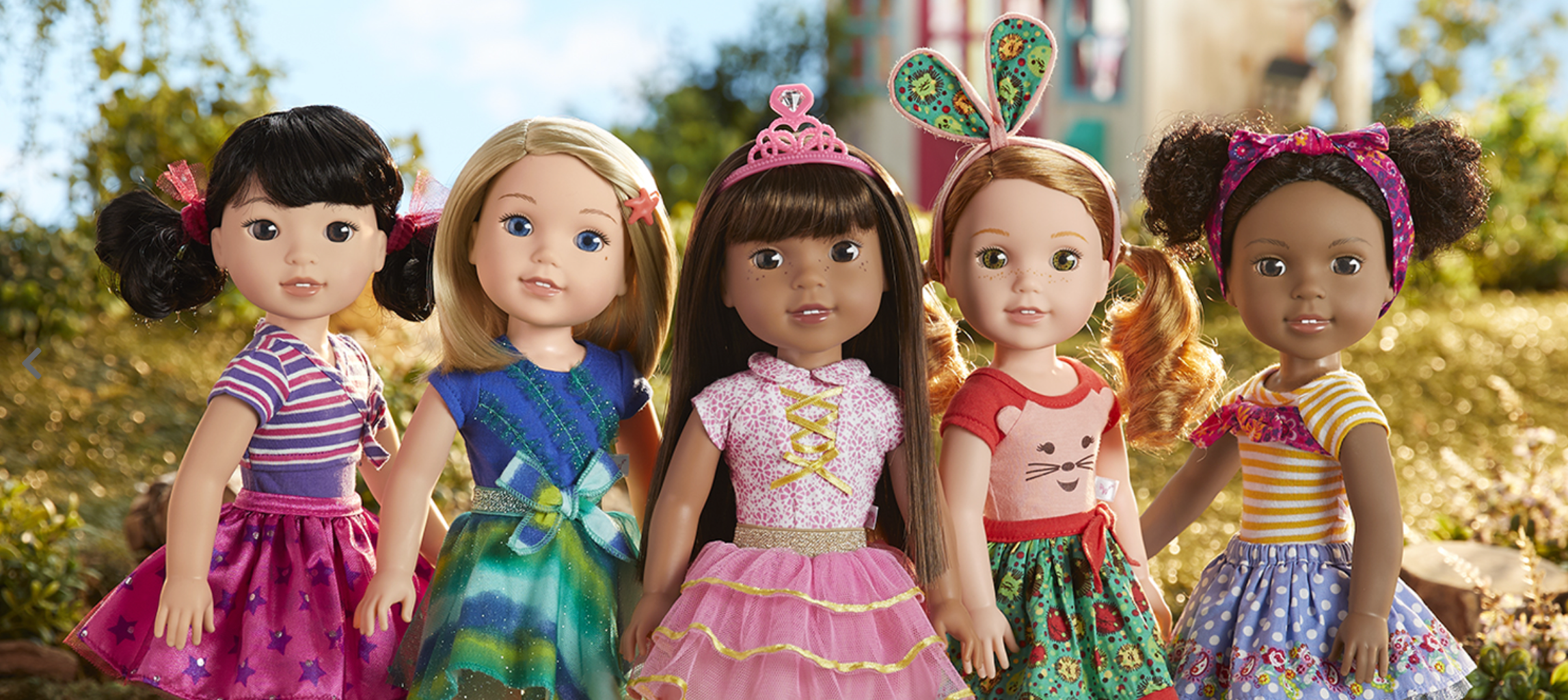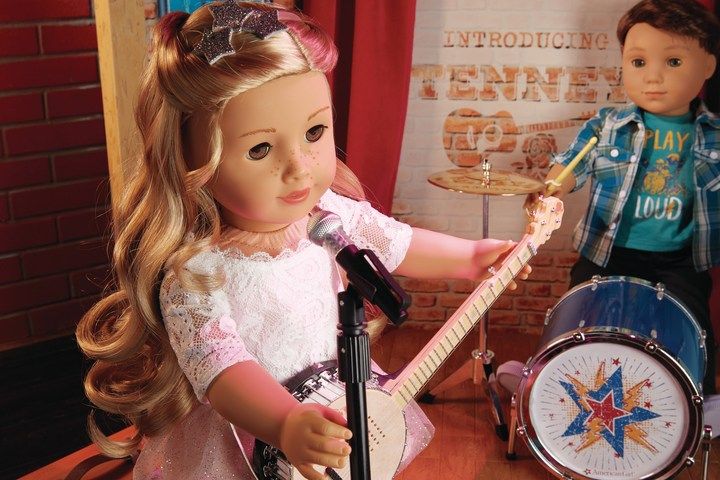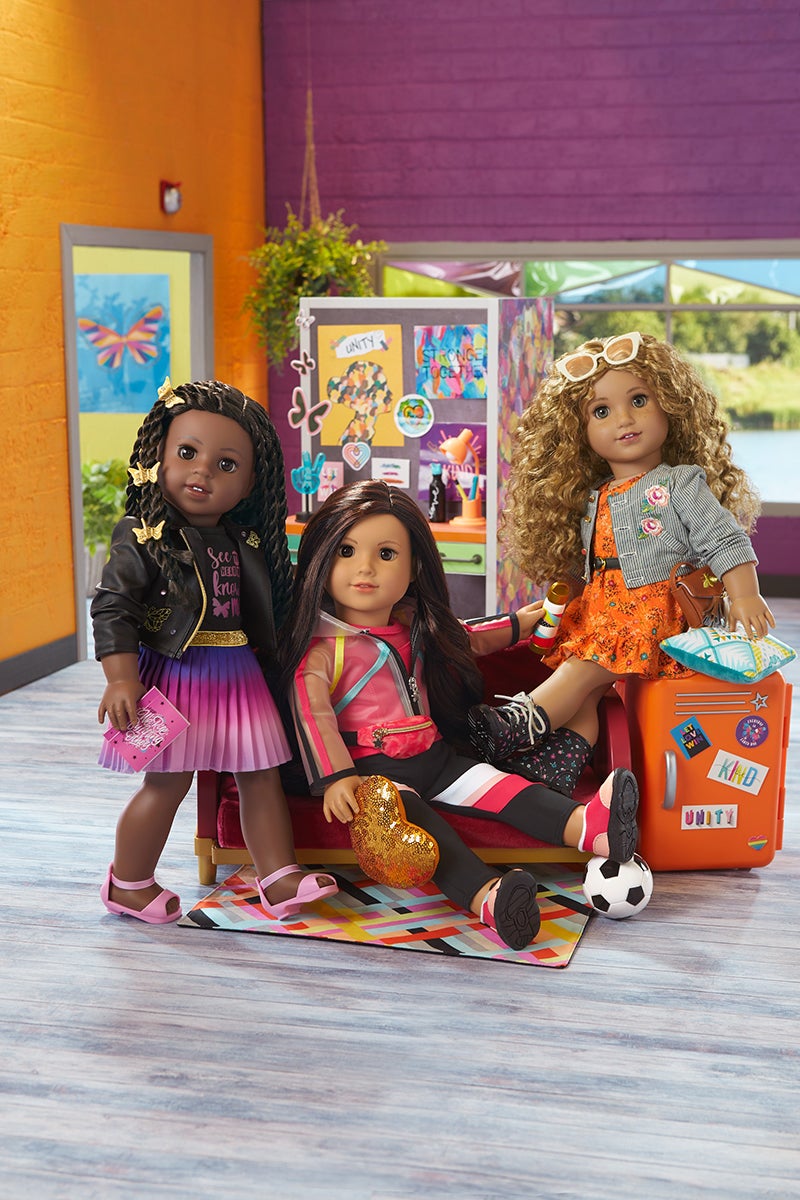Girls have played with dolls all over the world for thousands of years. The earliest type is the wooden paddle doll, found in Egyptian tombs dating back as early as the 21st century BC.
However, one of the most prominent doll brands of today is not the wooden paddle, as much fun as that would be.
American Girl was started by Pleasant Rowland, a writer and retired teacher from Chicago, in 1986. She found inspiration for the Pleasant Company brand after a visit to Colonial Williamsburg, VA, where she noticed a void in the toy market for dolls for middle-aged kids. Dolls were either created for babies or as collectables for adults. The Pleasant Company was located in Middleton, WI, until Mattel Inc., which also owns Barbie and Fisher-Price, purchased it in 1998.
“For American Girl, the company began from a place of real passion and, most importantly, purpose. It was mission-driven from the start—to do good things for girls—and that hasn’t changed,” said Jamie Cygielman, General Manager of American Girl. “We pride ourselves on having a solid pulse on girls’ lives today—from what they enjoy doing to where they’re spending their time and how we can support and encourage them throughout their girlhood. We also know we have an essential role to play in teaching girls about complex topics as our world evolves.”
In 1986, the first 18-inch dolls to be released were Kirsten Larson, Samantha Parkington and Molly McIntire. These three were the first to join “The American Girl Collection,” also known as the “Historical Characters.” This collection teaches aspects of American history through a six book series from the perspective of a nine-year-old girl in that time period. The dolls cost $68 with a paperback book or $75 with a hardcover book. Today, there are 11 historical American Girl characters available for $98 each.
In 1990, a line of 15-inch baby dolls was released, targeted to ages three and up. The “Bitty Baby” line targets younger ages and is a cheaper option than the original historical line.
The American Girl magazine was started in Middleton in 1992. The bimonthly magazine included articles, recipes, advice columns, fiction stories, crafts and activity ideas. It was announced in 2018, however, that the January/February 2019 issue would be the magazine’s last.
In 1994, the Pleasant Company released a line of contemporary dolls called “American Girl of Today.” It was renamed “Just Like You” in 2008, “My American Girl” in 2010, and “Truly Me” in 2015. The line includes 40 different combinations of dolls, including face mold, skin tone, eye color and hair color, length, texture and style. American Girl states “girls will have the opportunity to explore and discover their own unique styles and interests with Truly Me,” allowing “a girl to create a one-of-a-kind friend through a variety of personalized doll options.” Four Truly Me boy dolls were added to the line in 2018.
The first American Girl store opened in 1998 in Chicago, the same year the company was purchased by Mattel, and was quickly followed by stores in New York City and Los Angeles. Today, there are only 13 American Girl stores open worldwide, as 15 stores have closed around the world in the past five years.
In 2003, “Hopscotch Hill School” was released. These 16-inch dolls came with books for elementary-aged girls from four to six years old to help nurture confidence as they began school. This line was discontinued in 2006.
Also in 2003, American Girl released a line similar to “Bitty Baby” called “Bitty Twins,” which was targeted at slightly older audiences. These dolls could only be purchased as a pair, since the twins came together. This was the first time boy dolls were sold. The line was discontinued in 2016, but was brought back as “Bitty Baby Twins” in 2021.
In 2004, the “Historical Characters” got an addition called the “Best Friends” line. These were supplemental characters from the core book series of the main historical dolls. They shared the collections of the main characters, but each had their own book and additional products under their own names. The line was retired in 2014, causing backlash from customers. In response, the company said, “While demand for characters certainly plays a part in our overall decision making, the main reason for this year’s approach is based on the decision to move away from our friend-character strategy within the historical line.”
Also in 2014, the “Historical Characters” were relaunched as “BeForever,” complete with redesigned outfits, a two-volume compilation of previously-released books, and a “Journey Book” for each character, where players take the role of a present-day girl who met up with one of the historical girls in the past.
The American Girl website says, “Each historical character—from a daring Native American girl living in the Northwest in 1764 to an optimistic girl growing up in San Francisco in the mid-1970s—inspires girls to stand up for what they believe in, to be independent thinkers who aren’t afraid to stand out in the crowd, to find strength in the face of adversity or tragedy, and to embrace life with all of its obstacles and opportunities. Through each engaging story, the characters become role models for young readers, teaching them the enduring power of being true to oneself.”
Over the past 35 years, there have been 17 primary historical characters and four best friends.
Kaya’aton’my
- When: 1764
- Where: Pacific Northwest
- Story: Kaya is a Native American, of the Nez Perce tribe. She dreams of being a leader for her people and finds her way through lessons her tribe passed down from elders to children.
- Fun Fact: Kaya is the only historical doll not to show teeth, as that is the tribal custom.
- Active: 2002-present
Felicity Merriman and Elizabeth Cole
- When: 1774
- Where: Williamsburg, VA
- Story: Felicity is in a family of Patriots during the Revolutionary War. She must find a way to manage her differences with her best friend, Elizabeth Cole, who is a loyalist, and learn what freedom really means.
- Fun Fact: In 2005, the movie “Felicity: An American Girl Adventure” was released, starring Shailene Woodley as Felicity.
- Active: 1991-2011, re-released in 2017-2019 (Felicity); 2004-2011 (Elizabeth)
Caroline Abbott
- When: 1812
- Where: Sackets Harbor, a village on the shores of Lake Ontario in New York
- Story: Caroline’s father is a shipbuilder who the British have taken prisoner. She must use her mind as well as her heart to make better choices as she ventures on a journey to save her father.
- Fun Fact: Caroline dreams of being a captain of her own ship.
- Active: 2012-2015
Josefina Montoya
- When: 1824
- Where: New Mexico
- Story: Josefina lives on a rancho with her father and sisters. To cope with the grief of losing her mother, Josefina leans on tradition and custom and helps others heal, just as her grandmother and aunt do.
- Fun Fact: Josefina’s family traditionally speaks Spanish, and there are Spanish words and phrases in her books that are defined in the glossary.
- Active: 1997-present
Cécile Rey and Marie-Grace Gardner
- When: 1853
- Where: New Orleans
- Story: Cécile Rey comes from a wealthy and free family of color, and befriends Marie-Grace Gardner, a young white girl new to the area. As yellow fever spreads, the girls volunteer at an orphanage and learn about helping others and how they aren’t that different.
- Fun Fact: Cécile and Marie-Grace are different from the other Historical and Best Friend Characters because they share the same level of importance in the books and collections.
- Active: 2011-2014
Kirsten Larson
- When: 1854
- Where: Minnesota
- Story: Kirsten’s family is from Sweden and settles in Minnesota. She attends a single-room schoolhouse and makes a new friend outside of her own “world” she is used to. The pioneers learn to embrace a new culture and discover that the true meaning of home and love is the same in English, Swedish and any other language.
- Fun Fact: Unlike the other dolls, Kirsten’s books have maintained their original illustrations (aside from the covers).
- Active: 1986-2010
Addy Walker
- When: 1863
- Where: Plantation in North Carolina
- Story: Addy’s family works on a plantation as slaves. As her family plans an escape to freedom, her father and brother are sold to another family, and Addy and her mother must find the courage to run. She must leave behind her younger sister as the pair makes their way north through the Underground Railroad. Addy never gives up hope of seeing the rest of her family again.
- Fun Fact: A stage adaptation of Addy’s book series was commissioned and produced by the Seattle Children’s Theater in 2007, and was then taken on a limited national tour in early 2008 through Kids Entertainment, Inc.
- Active: 1993-present
Samantha Parkington and Nellie O’Malley
- When: 1904
- Where: New York City
- Story: Samantha is an orphan living with her wealthy grandmother. Samantha always tries to behave properly and please her grandmother. As she befriends a servant girl, Nellie O’Malley, the two teach each other about friendship and helping others.
- Fun Fact: “Samantha: An American Girl Holiday” premiered on the WB Television Network in 2004 and was released on DVD soon thereafter.
- Active: 1986-2009, re-released 2014-present (Samantha); 2004-2009 (Nellie)
Rebecca Rubin
- When: 1914
- Where: New York City
- Story: Rebecca feels the pressure of tradition and assimilation clashing as she grows up in a poor family of Russian-Jewish immigrants. She dreams of starring in movies and makes money for her family by doing sidewalk performances, though her family is concerned about if her behavior is proper for a young girl.
- Fun Fact: Similar to Josefina’s Spanish-speaking family, Rebecca’s family speaks fluent Yiddish. Yiddish words are integrated into the stories and defined in the back of each book.
- Active: 2009-present
Kit Kittredge and Ruthie Smithens
- When: 1934
- Where: Cincinnati, OH
- Story: As Kit’s family struggles through the Great Depression, Kit writes stories and takes photographs for a local newspaper. The family turns their home into a boarding house to make extra money as Kit goes on adventures with her friend Ruthie. Kit is depicted as stubborn and fussy, but eventually turns it around after realizing her family’s misfortunes, becoming more supportive and helpful.
- Fun Fact: The feature film “Kit Kittredge: An American Girl” was released to theaters in 2008 and two video games were also developed (Kit Mystery Challenge for the Nintendo DS and A Tree House of My Own for Microsoft Windows).
- Active: 2000-present (Kit); 2008-2014 (Ruthie)
Nanea Mitchell
- When: 1941
- Where: Oahu
- Story: Nanea grew up in Oahu, where she wants to prove she is ready for responsibility as the youngest in her Ohana (family). As she begins to try to be more helpful, the Japanese attack the military base in Pearl Harbor where her father works. She illuminates the courage and spirit of how one girl can be the face of change.
- Fun Fact: American Girl worked with a five-member advisory board who provided expertise in Hawaiian culture, language and history to inform all aspects of Nanea’s character.
- Active: 2017-present
Molly McIntire and Emily Bennett
- When: 1944
- Where: Jefferson, IL
- Story: Molly’s father, who is a doctor, has gone to Europe to tend to wounded soldiers during the second World War and her mother becomes a Red Cross volunteer. Food shortages and other losses make Molly’s life more difficult as she awaits her father’s return alongside her friend Emily.
- Fun Fact: Since Emily is more of a minor character in Molly’s story, she was marketed instead as “Molly’s English friend.”
- Active: 1986-2014, re-released 2018-2019 (Molly); 2006-2014 (Emily)
Maryellen Larkin
- When: 1954
- Where: Daytona Beach, FL
- Story: Maryellen is a polio survivor who finds her way through Cold War fears and prejudices with the support of a new friend as she overcomes pressure to conform and learns the value of individuality. Maryellen loves the shows “Davy Crockett” and “The Lone Ranger” and dreams up episodes where she can be the hero.
- Fun Fact: A short film was created on her stories and uploaded to YouTube in 2015. In addition, a special called “An American Girl Story – Maryellen 1955: Extraordinary Christmas” was released to Amazon Prime in 2016.
- Active: 2015-present
Melody Ellison
- When: 1964
- Where: Detroit
- Story: Melody’s family experiences the growth of the Civil Rights Movement in the Detroit community. Melody loves Motown Records and uses her voice to lift others for equality. When the 16th Street Baptist Church bombing occurs, four little girls died. Melody is scared of going to church because of this, but works to overcome her fear.
- Fun Fact: Melody’s advisory board included NAACP executive committee member JoAnn Watson, professor of African American Studies at the University of Michigan-Dearborn Gloria House, professor of history at New York University Thomas Sugrue, and former NAACP chairman Julian Bond.
- Active: 2016-present
Julie Albright and Ivy Ling
- When: 1974
- Where: San Francisco
- Story: Julie discovers a love of basketball after her parents’ divorce, but learns there are no teams for girls. She starts a petition to let girls play and discovers courage and determination is needed to create a positive change. Julie is often accompanied through her struggles with her best friend Ivy.
- Fun Fact: Julie was the first and only Historical Character to be simultaneously released with her Best Friend Character.
- Active: 2007-present (Julie); 2007-2014 (Ivy)
Courtney Moore
- When: 1986
- Where: Orange Valley, CA
- Story: Courtney is an expert gamer at the arcade, but she’s figuring out the rules as she goes with real life. She likes to be in control of what is happening around her, such as her mother’s campaign for mayor. Her story strongly reflects the pop culture from the 1980s, such as neon-colored fashion, music television and video games to space exploration, women in government and emerging technology.
- Fun Fact: Courtney’s character inspired the partnership between American Girl and Girls Who Code. “Girls are constantly online, using apps, playing games and more, that’s why it’s so important that they also see themselves on the other side of those products, actually building them,” says Reshma Saujani, CEO of Girls Who Code. “It’s our goal to show girls the power of learning this skill set so that they can code the future they want to live in and, ultimately, change the world.”
- Active: 2020-present
In 2001, American Girl created the “Girl of the Year” doll that could only be purchased that year. Each girl has their own special talent and focus, such as Marisol Luna’s dancing (2005), Mia St. Clair’s ice skating (2008), Saige Copeland’s art (2013), or Blaire Wilson’s wedding planning (2019). The Girl of the Year is available until December 31, or as long as supplies last. Lindsey Bergman (2001-2002) and Kailey Hopkins (2003-2004) were the Girl of the Year for two years, but the rest were each Girl of the Year for only one year. From 2012 to 2016, the Girl of the Year dolls also had a movie to accompany them. The 2021 character, Kira Bailey, goes to Australia and focuses on wildlife protection and climate challenges. Kira is the 19th Girl of the Year to be sold.
In 2016, American Girl recreated a separate line of dolls for a younger age called WellieWishers. This group of elementary age girls play in a backyard garden and have a smaller, slimmer design from the original American Girl dolls. This line is what replaced the Bitty Twins line.
In 2017, the Contemporary Characters line was released, featuring characters set in the present day. Unlike the Girl of the Year dolls, they are available for a few years before being discontinued, rather than just one. The line included Tenney Grant, a songwriter from Nashville, Logan Everett, Tenny’s bandmate and second introduction of a male doll within the company, and Z Yang, an aspiring filmmaker and photographer. However, these dolls were discontinued at the end of 2018.
In 2021, a version of the Contemporary Characters was released, called “World by Us.” Jamie Cygielman, General Manager of American Girl, said, “We created the new ‘World by Us’ line to accelerate our progress in diversifying our characters and stories to better reflect what it means to be an American girl today. Through Makena, Evette, and Maritza, as well as future characters to come, we hope our fans learn that they’re never too young to contribute to the larger conversation and help make the world a more inclusive, unified place.”
American Girl began with a strong focus on teaching history to young girls. According to an article in Smithsonian Magazine, “Far from avoiding difficult subjects in American history, the brand seeks to address shameful chapters in the nation’s past through the eyes of its pre-adolescent characters. ‘[This] doesn’t diminish events, but instead just [offers a] point of view on them that children can understand,’ says Piper. ‘… American Girl doesn’t condescend to children, but treats them as their own historical agents.’”
As years have gone on, American Girl has made changes, new additions and has gone in different directions from the original company concept, but with the release of the “World by Us” collection, the recurring idea of a story focused on female empowerment is reassuring to customers who have worried for the future of the company.
